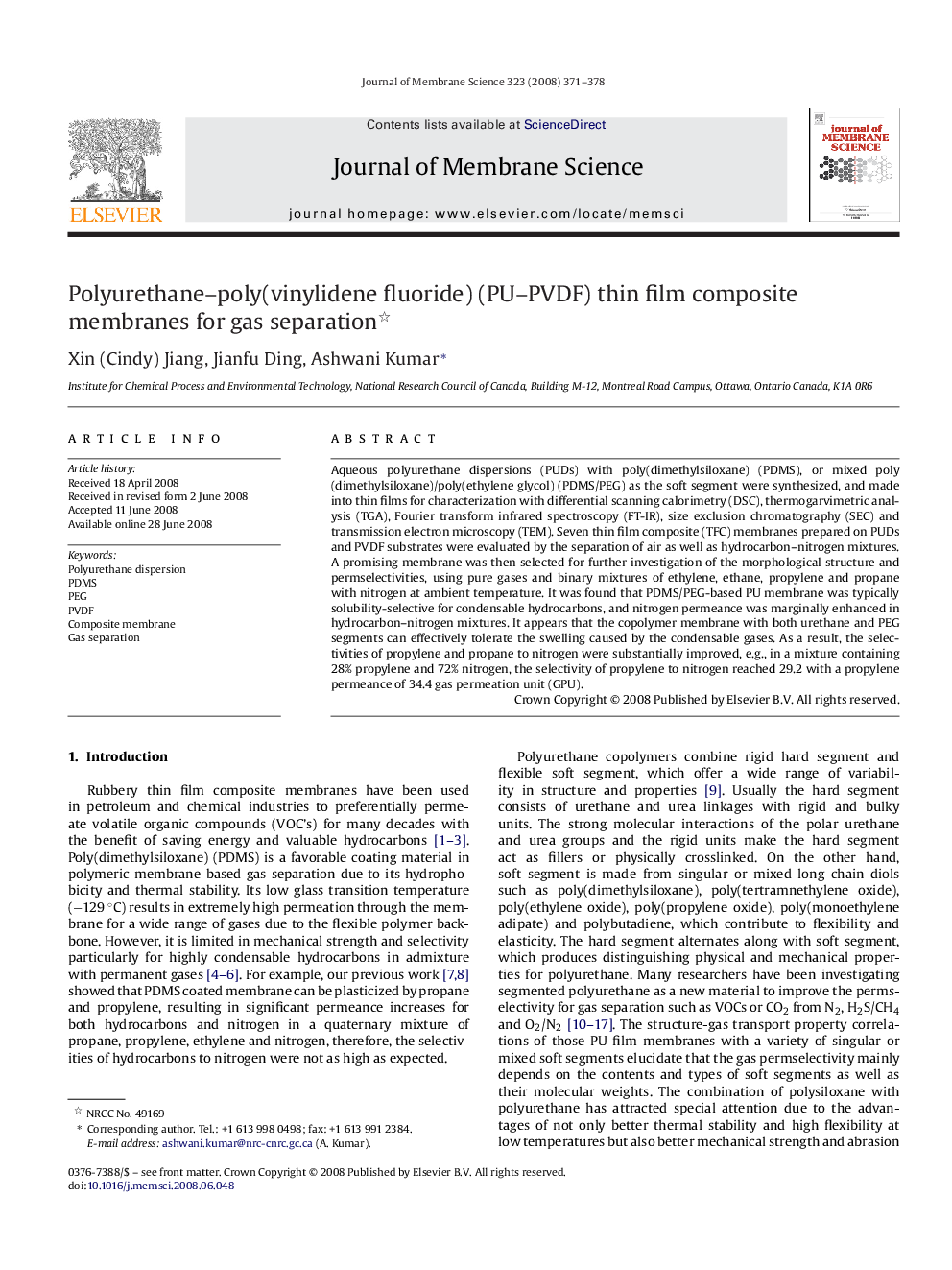| Article ID | Journal | Published Year | Pages | File Type |
|---|---|---|---|---|
| 637687 | Journal of Membrane Science | 2008 | 8 Pages |
Aqueous polyurethane dispersions (PUDs) with poly(dimethylsiloxane) (PDMS), or mixed poly(dimethylsiloxane)/poly(ethylene glycol) (PDMS/PEG) as the soft segment were synthesized, and made into thin films for characterization with differential scanning calorimetry (DSC), thermogarvimetric analysis (TGA), Fourier transform infrared spectroscopy (FT-IR), size exclusion chromatography (SEC) and transmission electron microscopy (TEM). Seven thin film composite (TFC) membranes prepared on PUDs and PVDF substrates were evaluated by the separation of air as well as hydrocarbon–nitrogen mixtures. A promising membrane was then selected for further investigation of the morphological structure and permselectivities, using pure gases and binary mixtures of ethylene, ethane, propylene and propane with nitrogen at ambient temperature. It was found that PDMS/PEG-based PU membrane was typically solubility-selective for condensable hydrocarbons, and nitrogen permeance was marginally enhanced in hydrocarbon–nitrogen mixtures. It appears that the copolymer membrane with both urethane and PEG segments can effectively tolerate the swelling caused by the condensable gases. As a result, the selectivities of propylene and propane to nitrogen were substantially improved, e.g., in a mixture containing 28% propylene and 72% nitrogen, the selectivity of propylene to nitrogen reached 29.2 with a propylene permeance of 34.4 gas permeation unit (GPU).
